Get On The List
Get the latest Men's Style Advice, Evergreen Guides, Shopping Tips, and Exclusive Deals From Today's Top Brands.

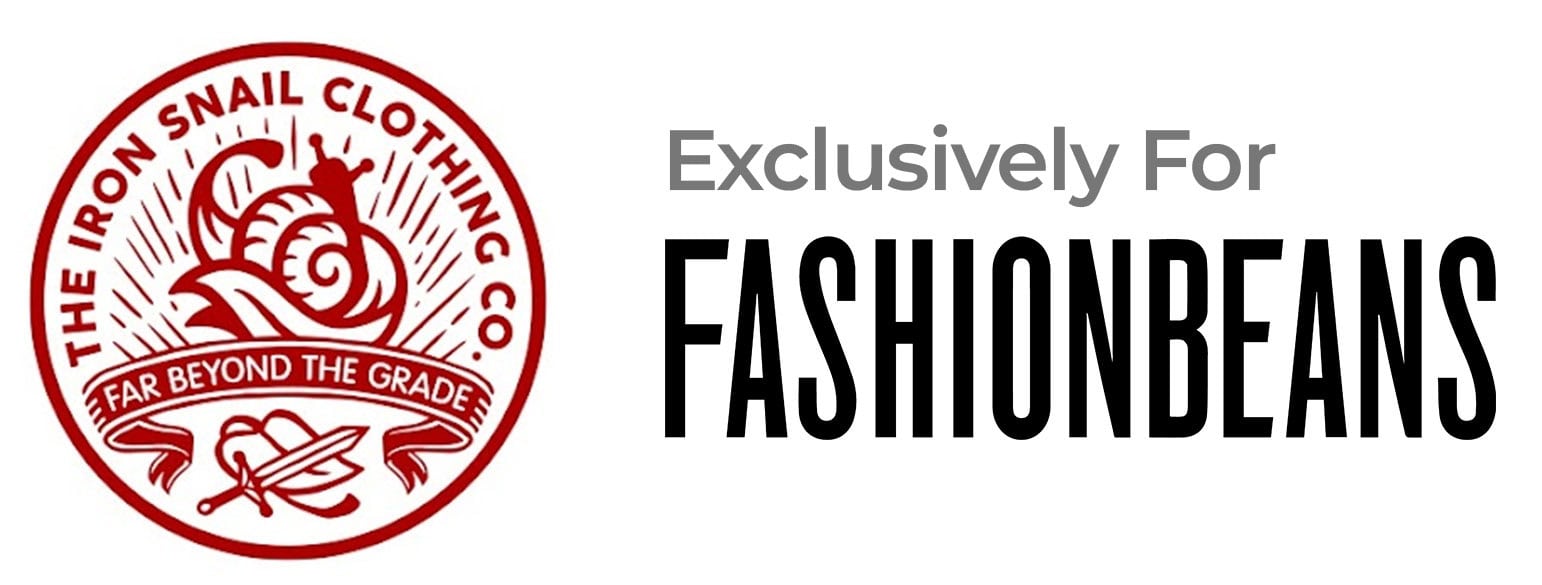
Word on the street is that the Wrangler Cowboy Cut jeans are using a better denim, constructed better, have more rivets, fit better, make your butt look better, and are essentially exactly 50 percent cheaper than Levi’s.
Believe it or not, that is essentially 100% true, but I still bet a lot of you are going to want Levi’s even after we break down all the reasons that Wrangler is actually a better jean. Here we go! Wrangler vs. Levi’s!
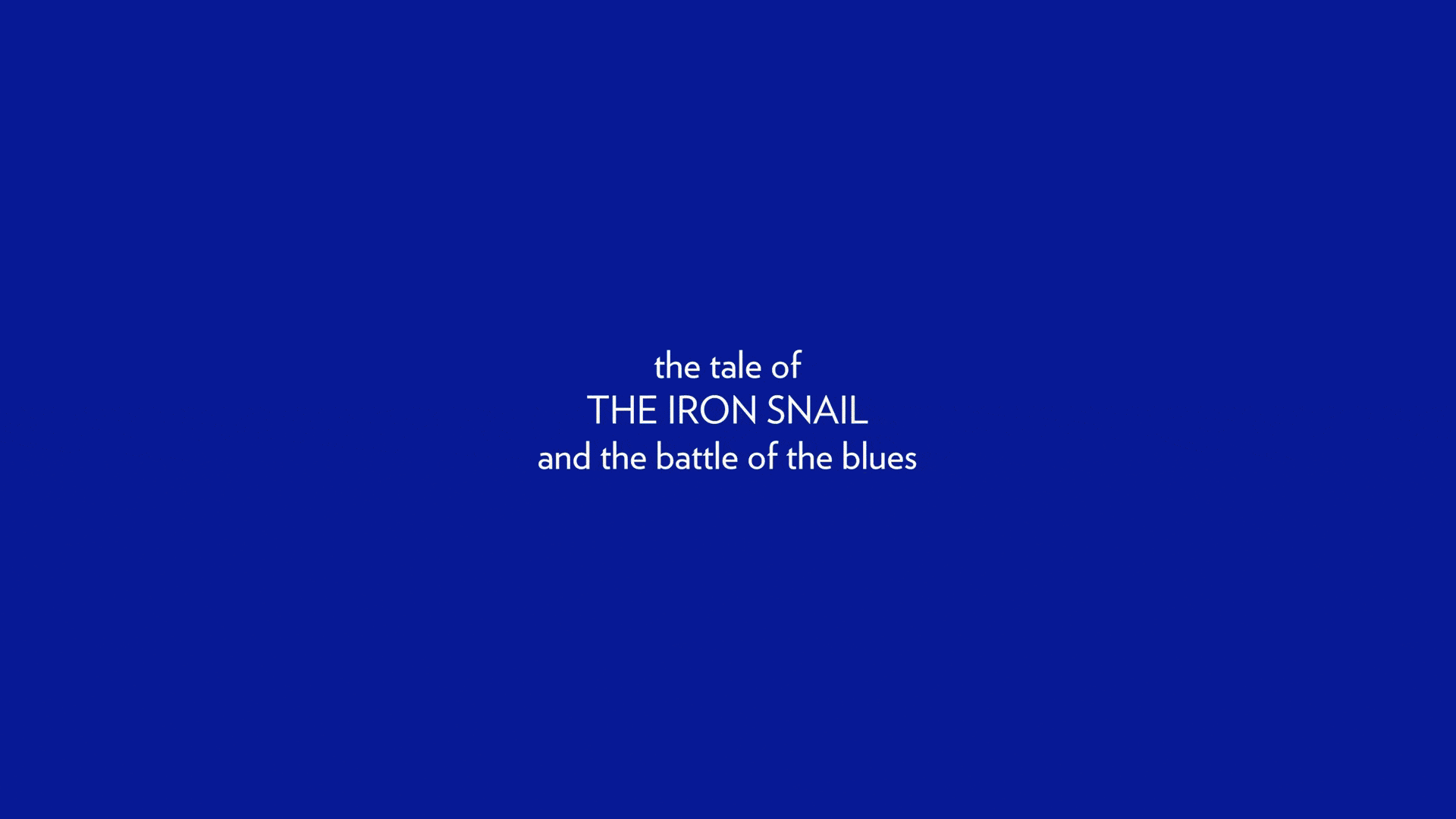
Hello everyone! My name is Michael, and we are comparing Wrangler Cowboy Cut jeans, Levi 501s rinsed, and the legendary Levi 501 shrink-to-fits. We will be looking at:
And then we’ll wrap up this article – what is truly the better fit? Are Wranglers actually that much better than Levi’s?
| Product | Denim Weight | Features | Construction Details | Fit and Style |
|---|---|---|---|---|
| Wrangler Cowboy Cut | 14.75 oz, broken twill | Higher pocket placement, more rivets, durable flat-felled out seam |
Reduced leg twist, softer feel, designed for heavy use |
Wider thigh, knee, and leg opening; emphasizes shape of the butt |
| Levi’s 501 Rinsed | 12 oz, right-hand twill | Lower pocket placement, lighter fabric with contrast stitching |
Traditional right-hand twill, slight leg twist |
Straight leg fit, relaxed pocket style, suitable for casual dressing |
| Levi’s 501 Shrink-to-Fit | 12 oz, right-hand twill (unsanforized) | Requires shrinking for fit; rise remains high after shrinking |
Unsanforized, leg twist possible post-shrink |
Higher rise post-shrink, pocket placement unchanged |
Okay, starting with denim: the Levi 501 has a 12-ounce denim that is right-hand twill. Wrangler has 14.75-ounce denim that is broken twill. Levi’s denim basically all runs in one direction, and Wrangler denim runs in two directions, so it looks smoother.
Wrangler debuted the Cowboy Cuts in 1947, far after Levi’s had already set the tone with the 501s. Levi was like, “This is the fabric that everybody should be using. It is a 12-ounce right-hand twill denim. This is how we should do the back, this is how we should put the patch on, this is blah blah blah.”
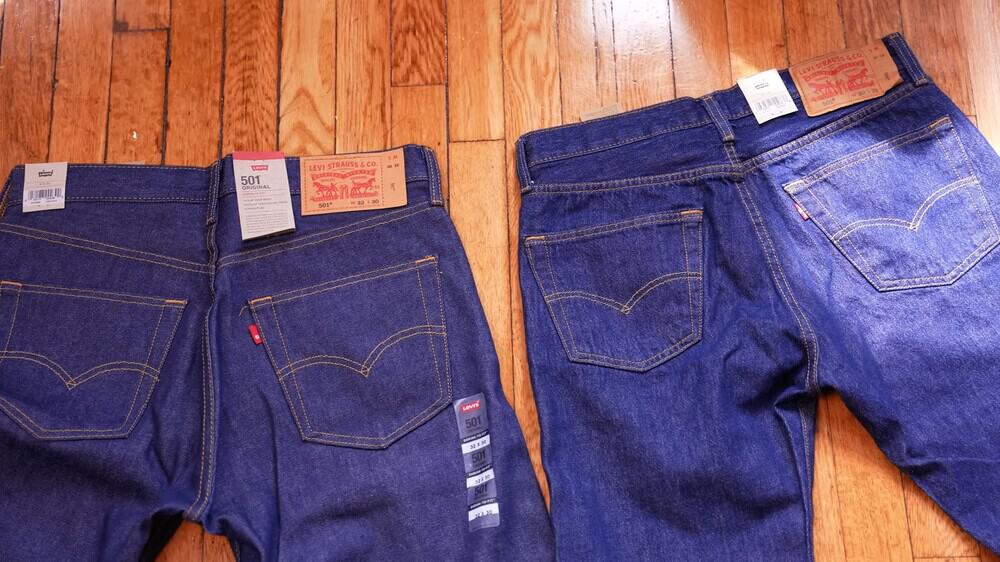
Wrangler acted more like an industry disrupter and said, “Hey, why are you setting the standard with this right-hand twill when we can use broken twill, which we view as better?” And with that, we have two things: one of them being broken twill, and the other one being denim weight.
Right-hand twill denim is fantastic – it’s still obviously being used today by virtually everyone, but at the time, it had a few issues. One: it was tough to break in, very stiff, and for the most part, the general masses of people don’t like that – they want their pants to be as soft as possible.
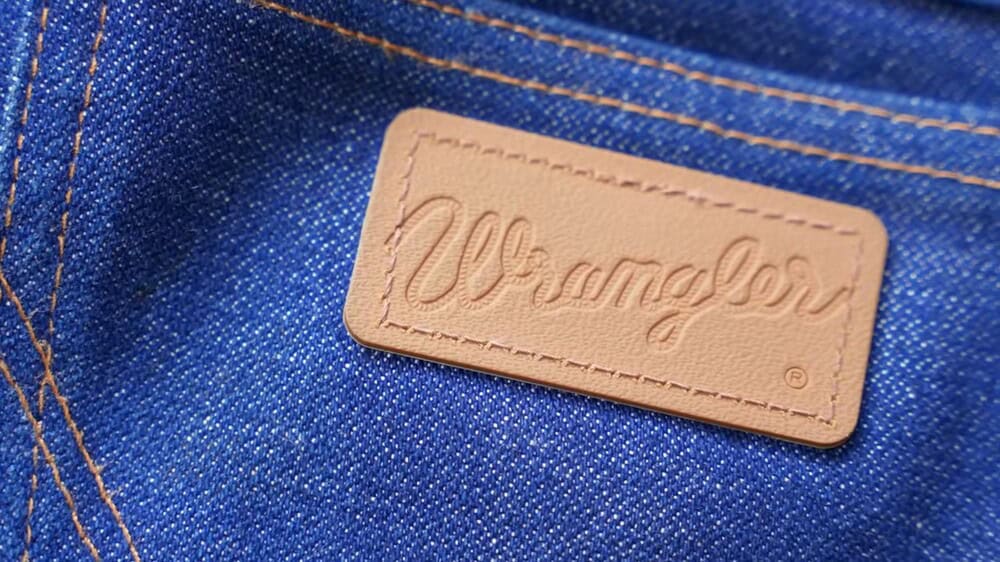
The other thing is basically all pants at the time were unsanforized – meaning you had to do what we’re going to talk about later with Levi 501 shrink-to-fits and, you guessed it, shrink them. As a result of that, with right-hand twill, the way that the fabric was woven, the leg would twist.
Nowadays, people like me are like, “Wow, that’s sick. Look at how messed up my pants got when I put them in the water!” In the ’40s and the ’50s, that wasn’t good. They wanted pants that looked correct, looked straight, and looked like they were sewn well. Broken twill is not going to shrink to the right or the left. It’s pulling both ways equally. So these pants did not experience leg twist as much, which was huge, and also they broke in quicker and were softer.
Wrangler jeans are 14.75 ounces, while Levi’s are typically around 12 ounces. That makes a big difference – you can feel that in the store, and if you’re working, if you’re a cowboy or something like that where your pants are ripping all the time, you might think, “Wow, these ones feel stronger so I’ll take those.”
But also at the same time, since it’s broken twill and it’s softer, Wrangler can go heavy without people complaining that their jeans are too stiff. By utilizing broken twill, Wrangler was essentially able to beef up the weight of their jeans and not have people feel it, and they would also avoid leg twist at the same time.
We’re almost done with construction, but besides just using a heavier-weight broken twill, Wrangler also kept the rivets on the back booty. Levi’s hid them, then did away with them with the invention of the bar tack, which is almost as strong as rivets, or the same. But they also construct their pants with a flat-felled outseam, which is stronger than how Levi’s does it, so these pants stay stronger longer.
Levi’s essentially became the best dress jeans, and Wranglers became the best work jeans. Wranglers are built better; they are tougher, but Levi’s, with their darker denim and lighter weight fabric, have a better drape and can be dressed up a little easier.
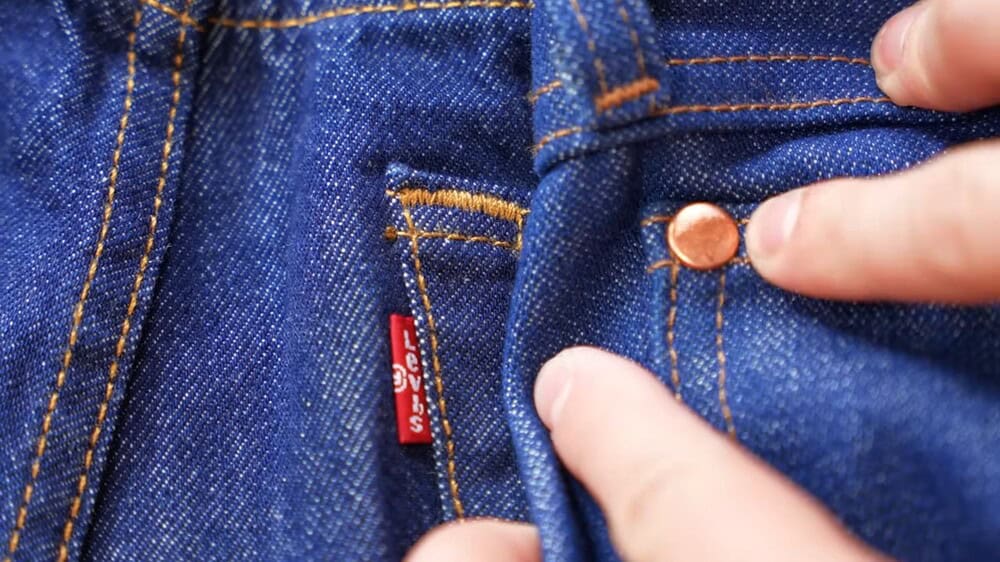
On a vintage pair of Levi’s jeans from the 90s that I have, compared to a pair of recreation Levi’s jeans from 1955, the pockets are way higher.
That is a dressier look, it gives you a tighter butt. So, if we compare that with modern-day Wranglers, Wranglers still have a higher pocket than the old Levi’s. Basically, Wrangler’s pockets have stayed virtually the same through modernity.
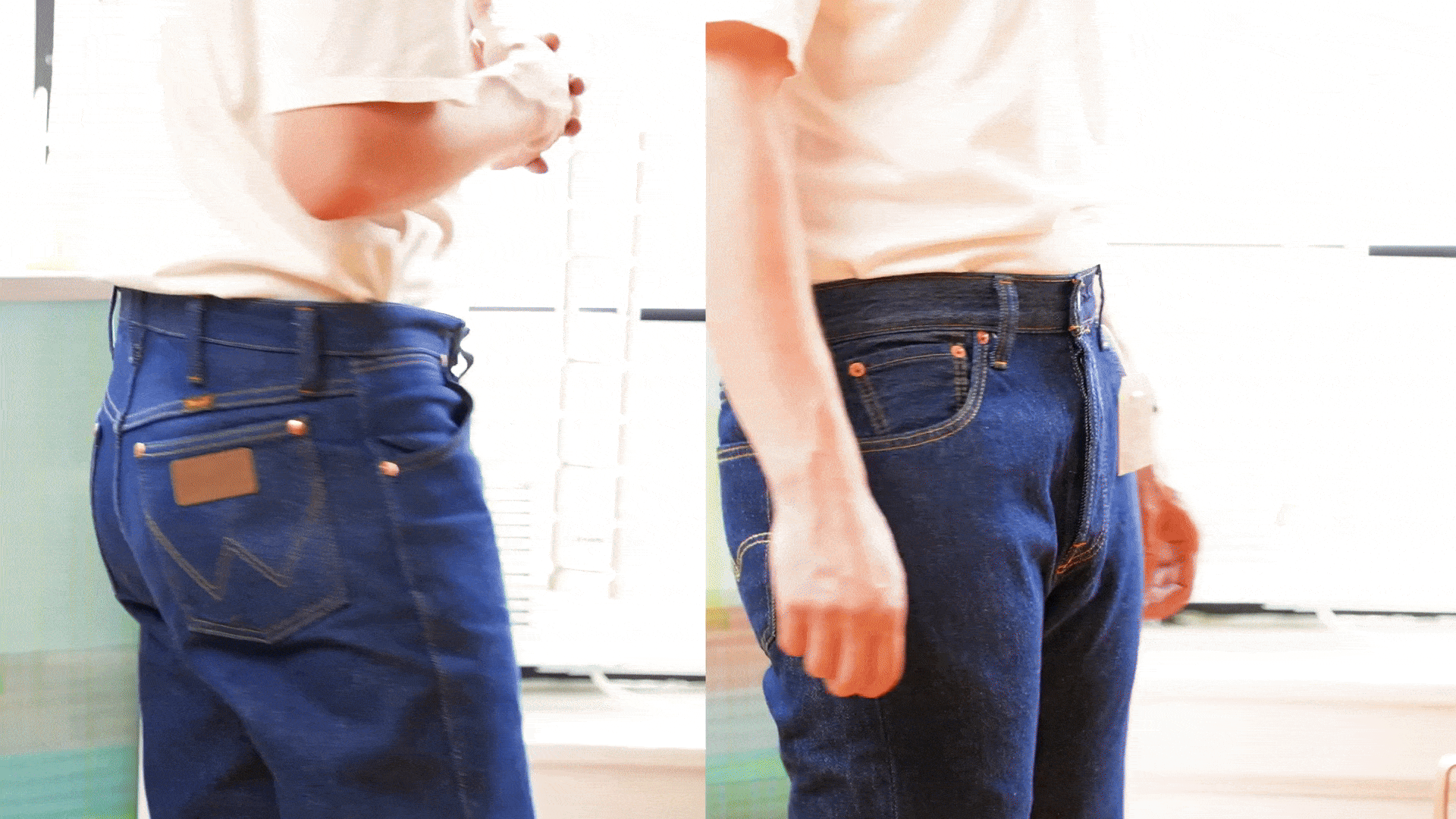
Okay, let’s take a look at the measurement. I took detailed measurements of the Wrangler vs. Levi’s 501s vs. Levi’s shrink-to-fits. Something to note right away: all of the waist sizes are the exact same. That’s pretty interesting when you consider that Levi’s shrink-to-fits are going to shrink.
So when we’re looking at the fit and trying to find the differences, obviously, we can eliminate the waist since that is the same across the board. We also don’t need to look at rise – obviously, we do for the shrink-to-fits, but those are different. Then we get to pocket height, which is higher for the Wranglers. The thigh of Wranglers is wider, the knee on Wranglers is wider, and the same with the leg opening.
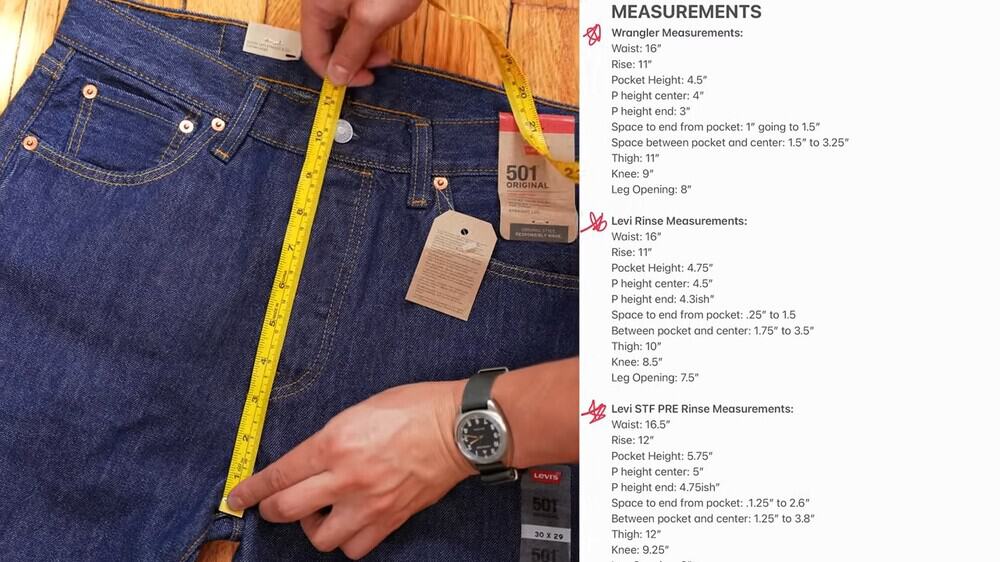
But really, what’s important to note here is that we’re just looking at a tighter pair of jeans in the Wranglers. You could probably size up one in Levi’s and get the same fit that you got in Wranglers. I noticed something interesting in the shrink-to-fits. The Wranglers and the 501s are both a size 30. The shrink-to-fits are a size 32. I went up two sizes, but the waist does not correlate.
Technically, if this was correctly vanity-sized, it would be 34 inches, but it’s not. It’s 16. 5, which is why you size up two in Levi’s because it shrinks down. That would make you assume that when these pants shrink down, they will probably shrink to be smaller than a rinsed pair of Levi’s at 30.
So the main difference is pocket height, and why did Levi’s lower their pockets over time on their jeans when we know higher pockets sit on your actual butt and help show it off? And the answer is: a relaxed lower pocket on jeans may seem like a silly thing to a 28-year-old in fantastic shape like Edgy Albert because why wouldn’t you want to show off your butt?
But if you are not in good shape or you have a very big butt that you were trying to hide, a relaxed backside with lower pocket bags will kind of help smooth that out, and you’ll see jean fabric instead of your massive butt.
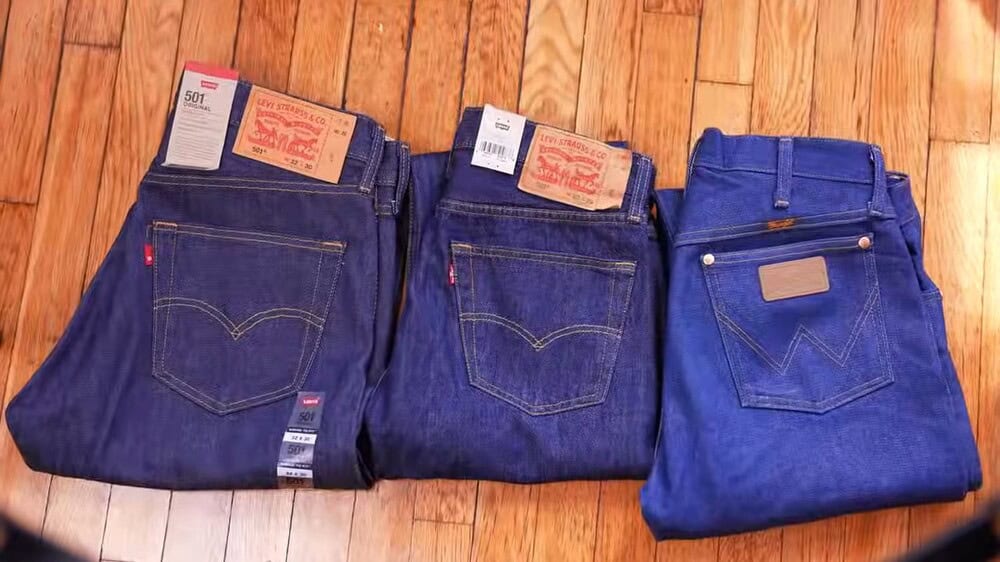
Now, there are like a trillion billion ways to make your body look different in jeans, and if you want good examples, go to the women’s section of any denim store. But with men, I think most men are like, “I just want a pair of jeans – they’re wide, or they are not,” when women’s lines are much more attuned to emphasizing and not emphasizing certain parts of their body.
The truth is, Wranglers will emphasize how your butt looks – they will make it look better if that’s what you want, but if you get a nice fitting pair of jeans for your body in general, the pocket bags aren’t going to make that big of a difference.
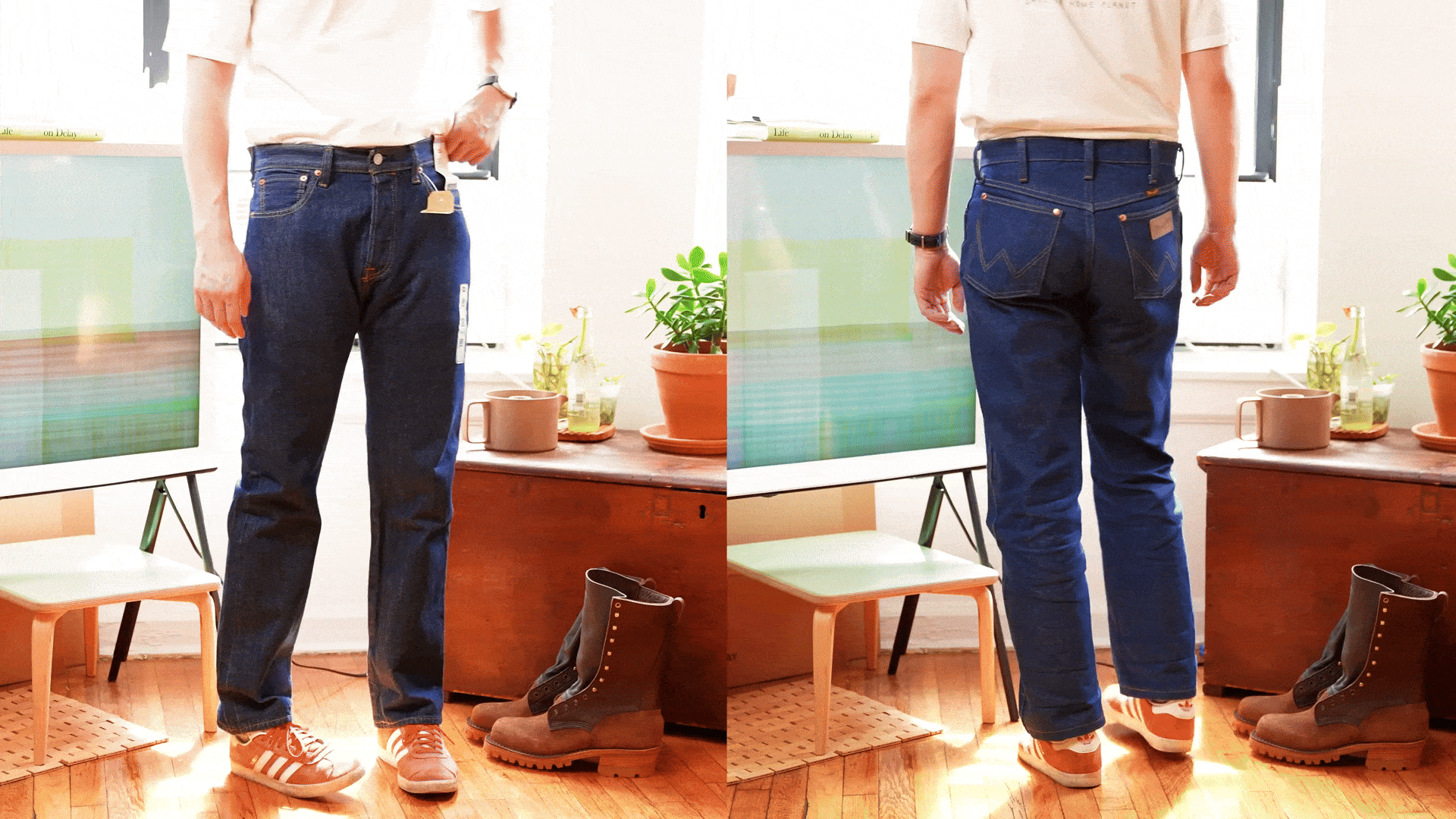
Now, we shall dive back into measurement mode and discuss some shrunk Levi 501 shrink-to-fits. The results are, you know, kind of what I would expect – they did get smaller than regular rinsed Levi 501s, which I thought was very interesting.
The rise remained a little higher, so that is a little bit more flattering for some people. Pocket height in general – I measured them and re-measured them, and they are basically negligible there. Thighs were still a little bit wider than regular, knees stayed relatively the same, and leg opening shrunk a little bit.

Now, if you threw these in the dryer, these would definitely, from the start, be a lot smaller than the sanforized rinsed 501 Levi’s, which I find very interesting. Still, it’s so negligible if you wash them similarly that I doubt you would ever notice. And by wearing these jeans frequently, I bet they would stretch out to about the same size.
The STFs look way better! The secret is I didn’t really put them in super hot water, and then I didn’t dry them. If I did, they would look a lot similar to the non-STFs. That’s why there’s that big difference, so don’t toss your STFs in the dryer or rinse them that hot and you can get a really nice fit.
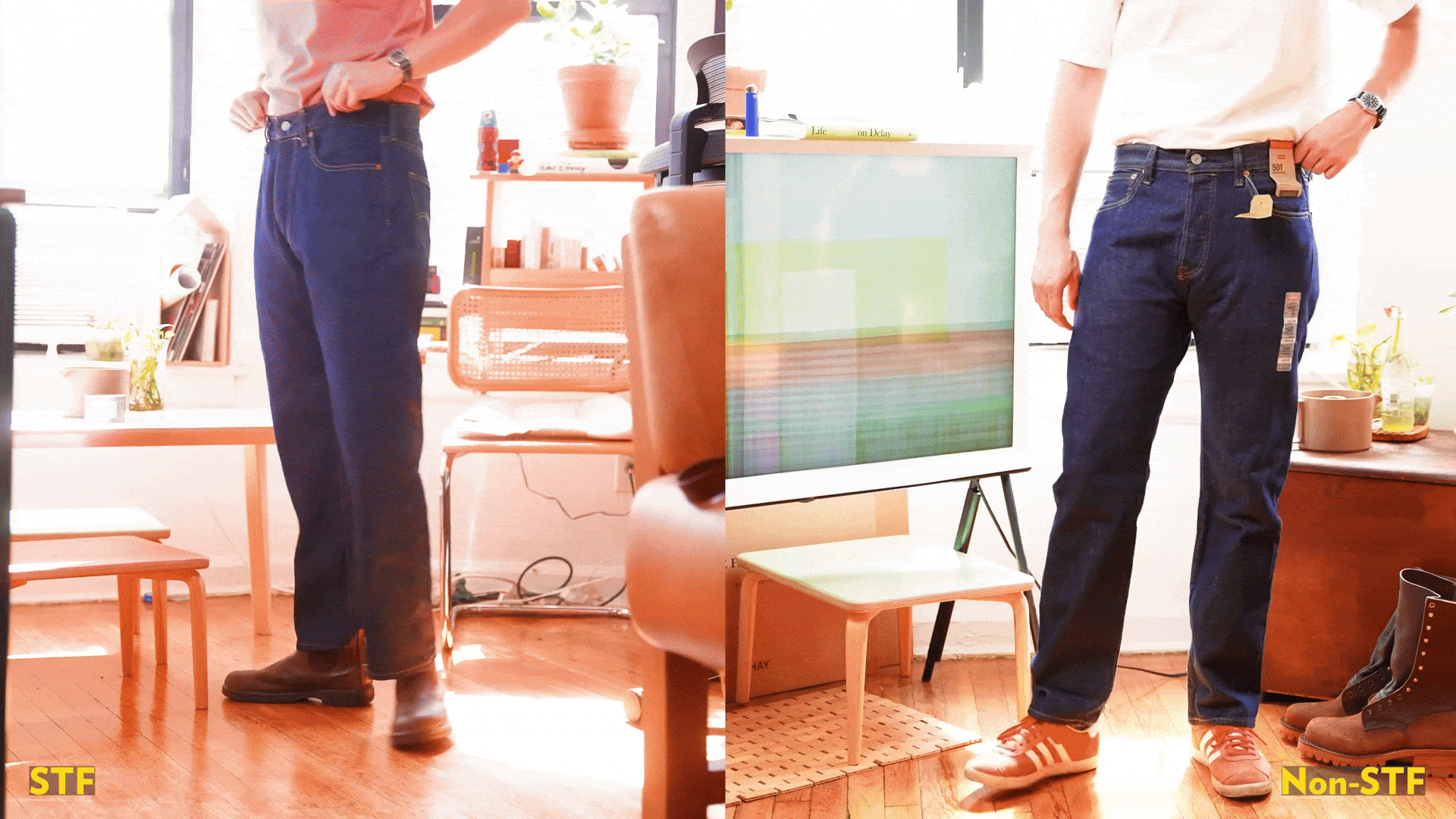
Okay, so in summary, which jeans do I like better, Wrangler vs. Levi’s? Frankly, neither… Never mind, it’s the 501 shrink-to-fits by a landslide! I like that Levi’s drape really well. I like that they use a darker denim, and I like that they have more contrast stitching, but I like that Wranglers use a 14.75-ounce denim. I don’t really care about broken twill that much.
Their construction is better. I like the rivets on the back, and I like the higher pocket bags. To be honest, I would much rather have the look of Levi’s besides the pocket bags. But they’re all great in different ways, you just kind of have to pick what you like. Thank you very much. I will see you soon!

This article was adapted from Michael Kristy’s video on The Iron Snail, with edits from FashionBeans, and was reviewed by Michael to ensure the integrity of his original content. Watch the full video here.
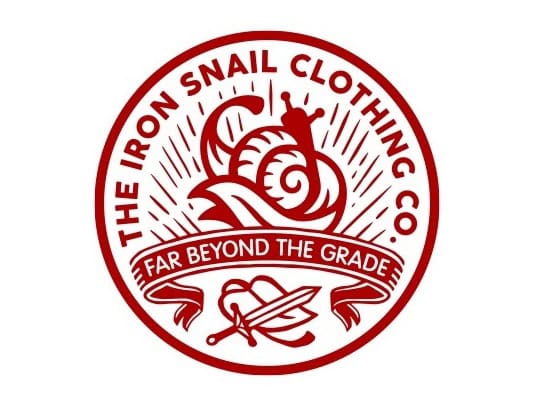
The Iron Snail is a men’s fashion vlog (and now article series!) starring a young man named Michael and featuring a snail no bigger than a quarter. The two are set on taking over the world of fashion by creating a clothing line to end all clothing lines. Until then, we’re here to tell you EVERYTHING you need to know about the best clothing out there, from the highest quality raw denim jeans to the warmest jackets to the sturdiest boots…the Iron Snail has got you covered.

We independently evaluate all recommended products and services. Any products or services put forward appear in no particular order. if you click on links we provide, we may receive compensation.
Word on the street is that the Wrangler Cowboy Cut jeans are using a better denim, constructed better, have more rivets, fit better, make your butt look better, and are essentially exactly 50 percent cheaper than Levi’s.
Believe it or not, that is essentially 100% true, but I still bet a lot of you are going to want Levi’s even after we break down all the reasons that Wrangler is actually a better jean. Here we go! Wrangler vs. Levi’s!

Hello everyone! My name is Michael, and we are comparing Wrangler Cowboy Cut jeans, Levi 501s rinsed, and the legendary Levi 501 shrink-to-fits. We will be looking at:
And then we’ll wrap up this article – what is truly the better fit? Are Wranglers actually that much better than Levi’s?
| Product | Denim Weight | Features | Construction Details | Fit and Style |
|---|---|---|---|---|
| Wrangler Cowboy Cut | 14.75 oz, broken twill | Higher pocket placement, more rivets, durable flat-felled out seam |
Reduced leg twist, softer feel, designed for heavy use |
Wider thigh, knee, and leg opening; emphasizes shape of the butt |
| Levi’s 501 Rinsed | 12 oz, right-hand twill | Lower pocket placement, lighter fabric with contrast stitching |
Traditional right-hand twill, slight leg twist |
Straight leg fit, relaxed pocket style, suitable for casual dressing |
| Levi’s 501 Shrink-to-Fit | 12 oz, right-hand twill (unsanforized) | Requires shrinking for fit; rise remains high after shrinking |
Unsanforized, leg twist possible post-shrink |
Higher rise post-shrink, pocket placement unchanged |
Okay, starting with denim: the Levi 501 has a 12-ounce denim that is right-hand twill. Wrangler has 14.75-ounce denim that is broken twill. Levi’s denim basically all runs in one direction, and Wrangler denim runs in two directions, so it looks smoother.
Wrangler debuted the Cowboy Cuts in 1947, far after Levi’s had already set the tone with the 501s. Levi was like, “This is the fabric that everybody should be using. It is a 12-ounce right-hand twill denim. This is how we should do the back, this is how we should put the patch on, this is blah blah blah.”

Wrangler acted more like an industry disrupter and said, “Hey, why are you setting the standard with this right-hand twill when we can use broken twill, which we view as better?” And with that, we have two things: one of them being broken twill, and the other one being denim weight.
Right-hand twill denim is fantastic – it’s still obviously being used today by virtually everyone, but at the time, it had a few issues. One: it was tough to break in, very stiff, and for the most part, the general masses of people don’t like that – they want their pants to be as soft as possible.

The other thing is basically all pants at the time were unsanforized – meaning you had to do what we’re going to talk about later with Levi 501 shrink-to-fits and, you guessed it, shrink them. As a result of that, with right-hand twill, the way that the fabric was woven, the leg would twist.
Nowadays, people like me are like, “Wow, that’s sick. Look at how messed up my pants got when I put them in the water!” In the ’40s and the ’50s, that wasn’t good. They wanted pants that looked correct, looked straight, and looked like they were sewn well. Broken twill is not going to shrink to the right or the left. It’s pulling both ways equally. So these pants did not experience leg twist as much, which was huge, and also they broke in quicker and were softer.
Wrangler jeans are 14.75 ounces, while Levi’s are typically around 12 ounces. That makes a big difference – you can feel that in the store, and if you’re working, if you’re a cowboy or something like that where your pants are ripping all the time, you might think, “Wow, these ones feel stronger so I’ll take those.”
But also at the same time, since it’s broken twill and it’s softer, Wrangler can go heavy without people complaining that their jeans are too stiff. By utilizing broken twill, Wrangler was essentially able to beef up the weight of their jeans and not have people feel it, and they would also avoid leg twist at the same time.
We’re almost done with construction, but besides just using a heavier-weight broken twill, Wrangler also kept the rivets on the back booty. Levi’s hid them, then did away with them with the invention of the bar tack, which is almost as strong as rivets, or the same. But they also construct their pants with a flat-felled outseam, which is stronger than how Levi’s does it, so these pants stay stronger longer.
Levi’s essentially became the best dress jeans, and Wranglers became the best work jeans. Wranglers are built better; they are tougher, but Levi’s, with their darker denim and lighter weight fabric, have a better drape and can be dressed up a little easier.

On a vintage pair of Levi’s jeans from the 90s that I have, compared to a pair of recreation Levi’s jeans from 1955, the pockets are way higher.
That is a dressier look, it gives you a tighter butt. So, if we compare that with modern-day Wranglers, Wranglers still have a higher pocket than the old Levi’s. Basically, Wrangler’s pockets have stayed virtually the same through modernity.

Okay, let’s take a look at the measurement. I took detailed measurements of the Wrangler vs. Levi’s 501s vs. Levi’s shrink-to-fits. Something to note right away: all of the waist sizes are the exact same. That’s pretty interesting when you consider that Levi’s shrink-to-fits are going to shrink.
So when we’re looking at the fit and trying to find the differences, obviously, we can eliminate the waist since that is the same across the board. We also don’t need to look at rise – obviously, we do for the shrink-to-fits, but those are different. Then we get to pocket height, which is higher for the Wranglers. The thigh of Wranglers is wider, the knee on Wranglers is wider, and the same with the leg opening.

But really, what’s important to note here is that we’re just looking at a tighter pair of jeans in the Wranglers. You could probably size up one in Levi’s and get the same fit that you got in Wranglers. I noticed something interesting in the shrink-to-fits. The Wranglers and the 501s are both a size 30. The shrink-to-fits are a size 32. I went up two sizes, but the waist does not correlate.
Technically, if this was correctly vanity-sized, it would be 34 inches, but it’s not. It’s 16. 5, which is why you size up two in Levi’s because it shrinks down. That would make you assume that when these pants shrink down, they will probably shrink to be smaller than a rinsed pair of Levi’s at 30.
So the main difference is pocket height, and why did Levi’s lower their pockets over time on their jeans when we know higher pockets sit on your actual butt and help show it off? And the answer is: a relaxed lower pocket on jeans may seem like a silly thing to a 28-year-old in fantastic shape like Edgy Albert because why wouldn’t you want to show off your butt?
But if you are not in good shape or you have a very big butt that you were trying to hide, a relaxed backside with lower pocket bags will kind of help smooth that out, and you’ll see jean fabric instead of your massive butt.

Now, there are like a trillion billion ways to make your body look different in jeans, and if you want good examples, go to the women’s section of any denim store. But with men, I think most men are like, “I just want a pair of jeans – they’re wide, or they are not,” when women’s lines are much more attuned to emphasizing and not emphasizing certain parts of their body.
The truth is, Wranglers will emphasize how your butt looks – they will make it look better if that’s what you want, but if you get a nice fitting pair of jeans for your body in general, the pocket bags aren’t going to make that big of a difference.

Now, we shall dive back into measurement mode and discuss some shrunk Levi 501 shrink-to-fits. The results are, you know, kind of what I would expect – they did get smaller than regular rinsed Levi 501s, which I thought was very interesting.
The rise remained a little higher, so that is a little bit more flattering for some people. Pocket height in general – I measured them and re-measured them, and they are basically negligible there. Thighs were still a little bit wider than regular, knees stayed relatively the same, and leg opening shrunk a little bit.

Now, if you threw these in the dryer, these would definitely, from the start, be a lot smaller than the sanforized rinsed 501 Levi’s, which I find very interesting. Still, it’s so negligible if you wash them similarly that I doubt you would ever notice. And by wearing these jeans frequently, I bet they would stretch out to about the same size.
The STFs look way better! The secret is I didn’t really put them in super hot water, and then I didn’t dry them. If I did, they would look a lot similar to the non-STFs. That’s why there’s that big difference, so don’t toss your STFs in the dryer or rinse them that hot and you can get a really nice fit.

Okay, so in summary, which jeans do I like better, Wrangler vs. Levi’s? Frankly, neither… Never mind, it’s the 501 shrink-to-fits by a landslide! I like that Levi’s drape really well. I like that they use a darker denim, and I like that they have more contrast stitching, but I like that Wranglers use a 14.75-ounce denim. I don’t really care about broken twill that much.
Their construction is better. I like the rivets on the back, and I like the higher pocket bags. To be honest, I would much rather have the look of Levi’s besides the pocket bags. But they’re all great in different ways, you just kind of have to pick what you like. Thank you very much. I will see you soon!

This article was adapted from Michael Kristy’s video on The Iron Snail, with edits from FashionBeans, and was reviewed by Michael to ensure the integrity of his original content. Watch the full video here.

The Iron Snail is a men’s fashion vlog (and now article series!) starring a young man named Michael and featuring a snail no bigger than a quarter. The two are set on taking over the world of fashion by creating a clothing line to end all clothing lines. Until then, we’re here to tell you EVERYTHING you need to know about the best clothing out there, from the highest quality raw denim jeans to the warmest jackets to the sturdiest boots…the Iron Snail has got you covered.
The Iron Snail is a men’s fashion vlog (and now article series!) starring a young man named Michael and featuring a snail no bigger than a quarter. The two are set on taking over the world of fashion by creating a clothing line to end all clothing lines. Until then, we’re here to tell you EVERYTHING you need to know about the best clothing out there, from the highest quality raw denim jeans to the warmest jackets to the sturdiest boots…the Iron Snail has got you covered.
Read MoreThis website uses cookies so that we can provide you with the best user experience possible. Cookie information is stored in your browser and performs functions such as recognising you when you return to our website and helping our team to understand which sections of the website you find most interesting and useful.
Strictly Necessary Cookie should be enabled at all times so that we can save your preferences for cookie settings.
If you disable this cookie, we will not be able to save your preferences. This means that every time you visit this website you will need to enable or disable cookies again.